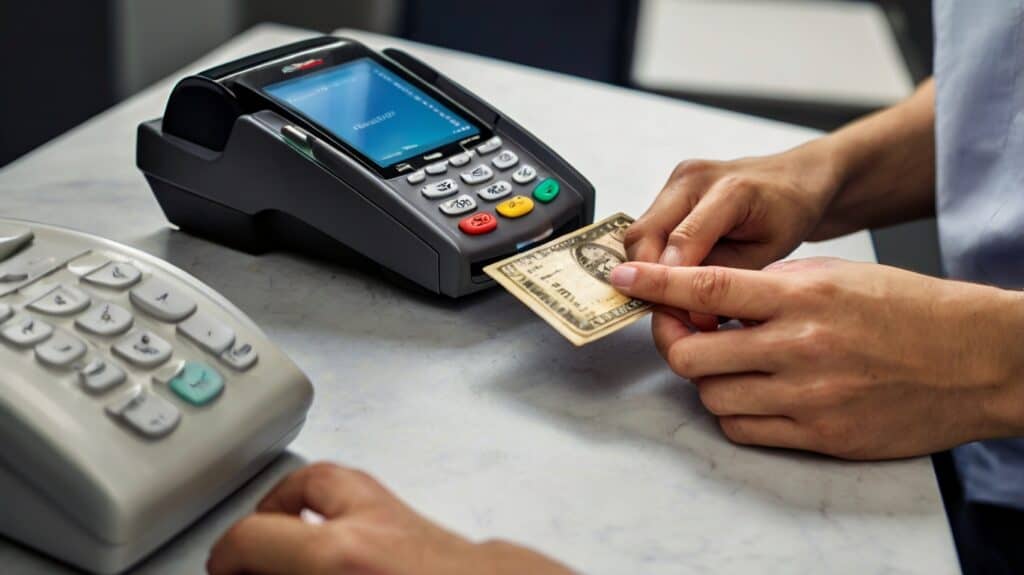
By alphacardprocess July 24, 2025
You’ve put in the work, the customer is satisfied, and now the best part is the payment. But what happens if out-of-the-blue delays, undisclosed fees or tech glitches eat into your profits? These are all too familiar issues for many small businesses and costly.
Payment processing may seem like a background task, but it plays a central role in keeping your business healthy. When it’s not set up properly, it can cause cash flow hiccups, damage customer relationships, and create frustrating admin headaches.
The truth is, getting paid doesn’t have to be difficult you just have to know what to be aware of. From selecting the right payment processors, merchant provider to getting out from under fees and disputes, there are some pitfalls that can ensnare small businesses owners.
In this guide, we look at some of the more frequent payment processing pitfalls and most importantly, how to avoid them – helping you to keep your business unencumbered and seeing that cash flow move in the right direction.
Understanding Payment Processing
Payment processing is the behind-the-scenes process of how money moves from the customer’s pocket to your business bank account. It may look instant from the outside, but there is much going on behind the scenes.

Here’s how it works: when a customer opens their preferred payment method and makes a payment, they input the payment method they want to use – whether it’s a card, mobile wallet, or QR code. That transaction is then processed by a payment processor, which talks to your customer’s bank and your merchant account (the account that temporarily holds the funds before they reach your business).
So the typical flow is something like this:
Customer → Payment method → Payment processor → Merchant bank → Your business account.
The number of ways to pay is multiplying today. It includes credit and debit cards, digital wallets like Google Pay and PhonePe, BNPL (Buy Now, Pay Later) services, and direct bank transfers.
Why does this matter? Because your setup directly affects your business. The wrong provider might result in steep fees, slow payouts or — in a worst-case scenario — security issues. On the other hand, a smart system maintains payments as fast, safe, and cheap. Understanding how the process works can help you stay in control, avoid surprises and get paid with confidence.
Common Payment Processing Pitfalls To Avoid
Here are some of the common payment processing pitfalls to avoid:
Pitfall #1: Choosing the Wrong Payment Provider
The most frequent mistake that small business owners make is jumping into partnership with the wrong payment provider. Majority providers say they will provide seamless, safe transactions but the experience can be far from what you had hoped for.
Some charge hidden fees — processing fees tacked on after you’ve signed a contract, or extra costs for features you thought were included. Others might provide low rates but compromise on security, compliance or, processing your money. And when things go wrong? Quality customer service can turn a small problem into a minor bump in the road.

Another issue is compatibility. Your payment system should be integrated to your current online platforms, point of sale systems, and your accounting solutions. If it doesn’t, you’ll waste your time trying to streamline things that do not play nicely with each other.
Choosing a provider based only on price can end up costing you more in the long run—through lost time, frustrated customers, or missed sales.
What to do instead? Look beyond just transaction fees. Take into account reliability, support for integrations, user friendliness, quality of client support, scalability. Read the fine print, ask questions and investigate reviews by other small business owners. A good PSP avoids creating more work than your business is already doing.
The right partner will help you get paid smoothly and keep your business running smoothly.
Pitfall #2: Overlooking Hidden Fees
This is one of the most common payment processing pitfalls. When choosing a payment provider, it can be tempting to be swayed by a low transaction rate, but what you see up front is not necessarily what you get in the long run. Too many small business owners are blinded by the advertised price and then find hidden fees are squeezing their profits down the line.
These additional charges could be monthly account fees, setup fees, chargeback fees, PCI compliance fees, and early termination penalties. Some also charge higher rates for certain card types, international payments or “manual” entries, such as keyed-in transactions.
To make matters worse, these fees are often hidden deep in that pesky fine print — or not revealed until the day your first statement lands in the mail.
Those small charges can add up over time, affecting your cash flow and making it more difficult to forecast how much you will really earn.
How to avoid it? Make sure to ask for a full breakdown of fees before signing up. Look through the terms and conditions and compare different offers provided. A provider with slightly higher headline prices but transparent pricing, may end up costing you less than one offering “too good to be true” promises.
Pitfall #3: Not Offering Enough Payment Options
Now customers want choice, not just in what they buy but in how they pay. By only offering one or two payment methods for your business, you risk losing out on sales, abandoned carts, and opportunities being missed.

No longer will it suffice to accept just cash or cards. Today, customers are looking for the flexibility to pay with mobile wallets, EMIs or even Buy Now Pay Later (BNPL). Be it checking out through a QR code, tapping a smartwatch, or paying for a purchase through instalment plans, the desire for the convenience and control is evident among individuals. This simplifies payments for small businesses and customers as well.
Providing more payment options does not just accommodate customer, it shows your business is modern, flexible, and easy with which to do business. This is one of the payment processing pitfalls you should avoid.
Pitfall #4: Ignoring Security and Compliance
Security and compliance is one of the most crucial aspects. Not following secure payment processes can mean that your business is at risk of fraud, fines and what’s most severe customer mistrust.
Storing card details insecurely, using old point-of-sale software or failing to carry out basic updates can all leave you prone to attack. But they often overlook one requirement: PCI DSS compliance, a worldwide standard intended to help businesses process card data in a secure way.
Modern cyber threats are evolving fast. From phishing scams and skimming devices to man-in-the-middle attacks, criminals are constantly looking for ways to exploit weak points in payment systems. Even a small breach can have serious consequences, especially for customer-facing businesses that rely on repeat trade and word of mouth.

What to do instead? Select a payment gateway that puts security first and is compliant with PCI DSS out-of-the-box. Keep your software and devices current, train your employees to recognize suspicious activity, and never store sensitive customer data if it’s not absolutely necessary — and even then, only in secure, encrypted areas.
Trust is everything in the digital age. Securing your payment portals proves to your customers that their safety is your first concern — and loyalty follows.
Pitfall #5: Slow Settlement and Cash Flow Crunch
You’ve made the sale, the customer’s paid — but the cash doesn’t show up in your account for days, sometimes even weeks. This is a typical pain point for small business owners and it can really pinch your cash flow.
Some processors will reserve funds for checks, delays, or policy. That may not be a deal breaker for big companies with deep pockets, but for small businesses it can upend everything — from your ability to pay suppliers to covering rent and employee pay.
Cash flow is the pulse of a small business. Without prompt access to the fruits of your labor, even a successful company can seem as if it’s marking time. A couple of late payouts can escalate into nonpayments, growing stress and stalled growth.
What to do instead? Make sure you check settlement timelines when comparing payment providers. Some processors can give you next-day or even same-day settlements; others take a few business days. Ensure their payout timeline aligns with your business needs and see if you can find a provider with real-time visibility into pending payments.
Being paid on time shouldn’t require guesswork and your business deserves better.
Conclusion
Payment processing isn’t just a back-end task — it’s a core part of running a successful business. Overlooking the details can cost you time, money, and even customer trust. But the good news? With the right systems in place and a little foresight, you can avoid common pitfalls and build a setup that works for you.
Whether it’s choosing the right provider, staying compliant, or offering flexible payment options, each decision adds up to a smoother, smarter payment experience — for you and your customers.
When payments flow easily, so does your business.
Frequently Asked Questions
1. How do I know if my payment provider is charging hidden fees?
Review your monthly statements closely, ask for a full fee breakdown, and compare providers. If something seems unclear, don’t hesitate to ask questions.
2. What is PCI DSS compliance, and do I need it?
PCI DSS is a set of security standards for handling card data. If you accept card payments, yes—you need to comply or work with a provider that handles it for you.
3. How many payment options should I offer?
Ideally, offer the most common ones: cards, mobile wallets, and QR codes. More options = fewer barriers to sale.
4. Can delayed settlements really affect my business?
Absolutely. Slow payouts can cause cash flow gaps that make it harder to pay expenses on time—especially for small businesses.
5. What’s the safest way to store customer payment data?
In most cases, it’s best not to store card data at all. Let your payment provider handle that securely using encryption and tokenisation.